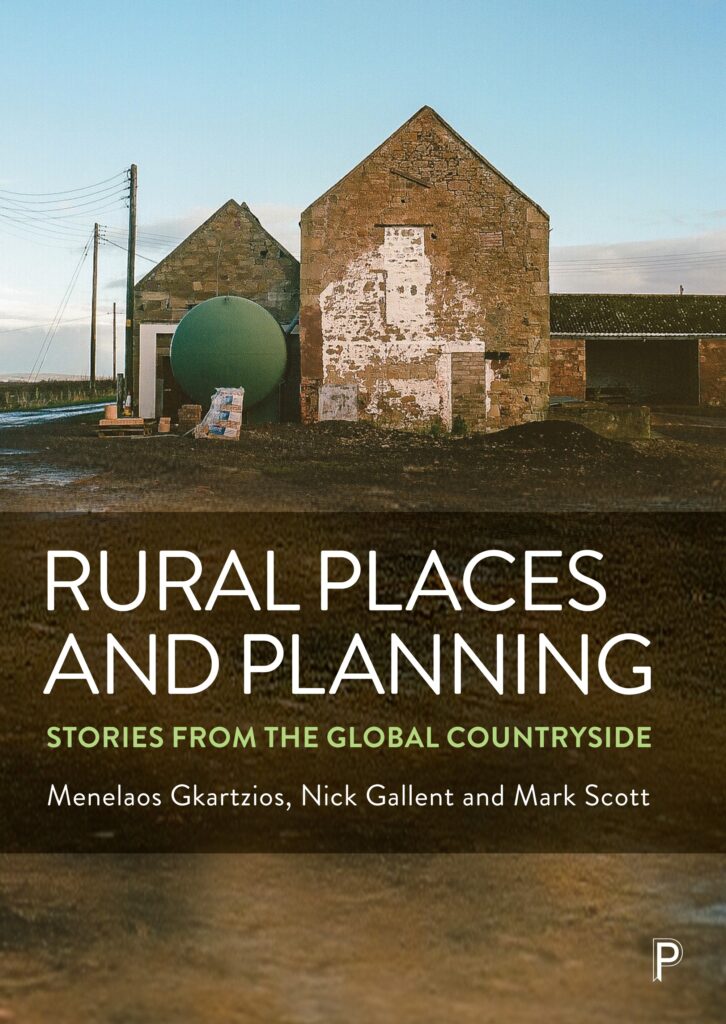Understanding the social world as urban and rural (and similar binary variations between the city and the provinces) is universal and persisting. Although this dichotomy is not something alarming per se in our engagement with places, it creates certain tensions.

For example, while scholarly discussions and textbooks about urban planning tend to ignore – even whitewash – the rural, writing a book about rural places and planning faces primarily the challenge of positioning the rural in the context of a spatial hierarchy. As a result, the rural is usually framed as the antithesis of the urban, implying a metropolitan superiority involving anything that goes on outside the city.
The reasons for this duality are well recognised in academic scholarship: the early association of the rural solely with farming and agriculture depicts a monochromatic version of what and who the rural is. However, we know that the contemporary countryside is a contested place of complex social relations, with new emergent economies and power struggles, associated with new societal challenges, mobilities, adaptation and mitigation strategies to the climate crisis, and increasingly involving all sectors of a new globalised economy; yet, it is still quite unique in that it is identified, recognised and lived as ‘rural’, however this is understood across the world. We also know that urban–rural places and identities are not binary opposites, as suggested linguistically. They are not opposite in equal terms: the rural is not the negative of a city, it is just another place that is experienced, practised, negotiated and imagined. Yet, the distinction between rural and urban places frames understandings of social life: our aspirations of where we want to live, to work, to progress.
In our new book Rural Places and Planning: Stories from the Global Countryside our challenge was to write about the ways to make it a better place. We understand the rural not as a marginal backwater that requires expert intervention, but as a contemporary, interconnected and even progressive place with its own unique challenges and opportunities. Specifically, we see the countryside as part of a global network of connected places. We explain that rural areas have assets that are place-based, meaning that these are situated within their physical (such as land, landscapes and natural resources) and built (such as infrastructures, telecommunications, housing) environments; they have assets that frame their development opportunities and limitations, their economies; they have ways of being and ways of changing based on their traditions, histories and cultures. Like many scholars before us, we frame all these assets as ‘capitals’, and while we accept that these are place-based, therefore unique in each place, we argue that in every rural place, a constellation of such linked capitals is what makes them rural. These are also the key to what can make them even better places. It is then for these communities, planners and other development agents to imagine and realise the ways that these capitals best intersect for the benefit of rural places. As such, this is a book showing how rural places function if we attempt to dismantle them into four archetypal capitals (material and non-material): the built rural, the land-based rural, the economic rural and the social and cultural rural. As a way of offering new imaginations of how planning interacts with these capitals, we theorise the relationship between planning and places through specific values that underpin actions across and with these capitals.
Our effort in this book is to avoid talking about planning systems and technocratic guidelines. We accept that in different parts of the world, planning (and rural planning) takes different forms and shapes with different priorities and rationalities. But everywhere, planning is trying to make places better: it functions as a higher instinct of human preparedness. Good planning is inseparable from place. For this reason, we specifically talk both about the idea and practice of planning in co-producing better rural places. Instead of planning systems, we discuss rural places as composite capitals that interact with each other in order to produce the rural lived experience – and aim for a better experience.
As a way to embed our scholarship into rural place, we bring into the book practical examples of how different types of capitals – which are of course always interconnected – interact across 12 case studies from the global countryside. These cover our ‘stories’, ranging from decarbonisation strategies addressing climate change to rural art festivals promoting community action and economic development; and from illegal deals and land grabbing, to recognising diversity and queer lives in the countryside. And more: rural community responses to the COVID-19 pandemic, adapting ecosystem services to local needs, delivering housing, infrastructure and smart technologies, the roles of cultural and natural heritage in rural development.
Our goal has been to produce a book that is pan-national, but not necessarily universal, in devising a recipe of the ‘perfect mix’ of such constituent capitals. Whatever works, works for a particular place. We accept that the different forms of capitals take different shapes, that it is impossible to summarise such interconnections universally. But our argument is that there is opportunity for learning, that in each place of the world, rural places do present a unique amalgam of such capitals which also frames their development opportunities and needs. And rural planning, as a broader social practice embedded in place, must organise and reorganise that amalgam in supporting the futures they deserve.
Menelaos Gkartzios is Reader in Planning and Rural Development at Newcastle University. Nick Gallent is Professor of Housing and Planning at University College London. Mark Scott is Professor of Planning at University College Dublin.
This blog was first published on the Transforming Society website.
